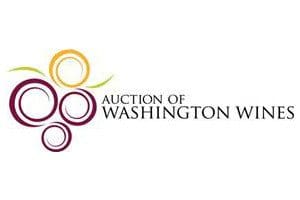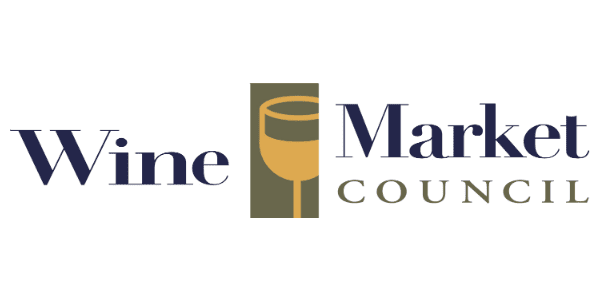Wine Market Council alongside EthniFacts LLC underscores the need for authentic cross-cultural wine products, packaging, and marketing aimed at the ever-growing Hispanic and African American populations.
 Napa, California – September 22, 2022 – The Wine Market Council (https://winemarketcouncil.com
Napa, California – September 22, 2022 – The Wine Market Council (https://winemarketcouncil.com
“It’s clear the demographics of our country are changing, and it’s important for the wine industry to understand and adjust to those changes,” said Dale Stratton, President of Wine Market Council.
This latest study comprises two-part research on the multicultural consumer. Part one was published in February 2022, focusing on quantitative data relating to the perception of wine among people of color. Part two of the Multicultural Study includes interviews with Hispanic and African American wine consumers. The interviews conducted by Regine Rousseau of Shall We Wine and Adrienne Pulido of Primavera Strategic Planning uncovered the following:
- More energy is needed; representation matters in marketing. Hispanic and African American consumers seek more youthful, energetic, bright, and vibrant packaging, promotions, and experiences that reflect diversity. There is a need for more people of color in ads, social media, and marketing communications.
- Less formal; show wine in everyday situations. Hispanic and African American consumers want to connect with wine based on how it is consumed in everyday life, including with family and friends. This also includes less formal experiences at the wineries and tasting rooms, where relationships with new wine drinkers, core consumers, and brand advocates are nurtured.
- Become socially familiar; connect to culture authentically in a familiar social, local, and casual way. Hispanic and African American consumers want to see wine brands and companies partner with locally owned neighborhood businesses to bring wine to their communities and to see relevant influencers, music artists, and athletes promote wine socially.
- Celebrate culturally diverse foods and wine. Wine should be associated with culturally relevant foods, highlight important flavors, spices, and tastes, work with POC chefs and restaurants, and educate wine store staff in Hispanic and African American areas.
- Tailoring wine to Hispanic and African American consumers. Wine should be more fun, giving Hispanic and African American consumers access to sampling new wines without buying a bottle in-store or at local events and tailoring wine to diverse entry-level consumers as they navigate their wine journeys.
- Too white; increase the visibility of diverse backgrounds. Wine often has an exclusionary image in settings where Hispanics and African Americans don’t see themselves. The diverse consumer wants to see people from different backgrounds drinking wine in a culturally relevant way.
- Not manly; breaking barriers about drinking wine. Diverse consumers want to see more aspirational examples of African American and Hispanic men drinking wine.
- High barriers to entry, making wine more accessible. Simplify the description of wine by using everyday language to describe flavors and pairings on the label, shelf talkers, and tasting notes that speak to the diverse consumer. Offer approachable wine education to build confidence when ordering wine for new consumers while tailoring advanced education to those at further levels of their wine journey.
- Not marketed to Hispanics and African Americans; collaborate with diverse influencers. Collaborating with sommeliers of color, celebrities, musicians, sports players, and industry influencers can be a pathway to familiarity with Hispanic and African American consumers.
- Representation matters in the workforce. Hispanic and African Americans want to see more people of color owning and working at wine companies and their vendors. They are also keen to understand how and where products are sourced, focusing on local farmers. Partner with organizations serving diverse communities, such as Hispanics in Wine, the Association of African American Vintners, and service-oriented groups to connect authentically.
“Diverse consumers make up over 50% of Millennial and younger generations vs. 28% or less of Boomer and older generations, making efforts to better serve people of color an imperative for future growth. Our research clearly shows that many diverse consumers feel wine marketing and product offerings have missed the mark, as other beverage alcohol categories can appear more exciting and relevant. These findings can serve as a roadmap to wineries and suppliers searching to overcome these obstacles,” said Mike Lakusta, CEO and Founding Partner of the research firm EthniFacts LLC.
The study also identifies where the diverse consumers are in their wine journeys. Based on the interviews, Hispanic and African American consumers were introduced to wine at home, at work, or on travel. Whether it’s a co-worker introducing them to wine, their parents, female friends, studying abroad, or visiting wineries during vacation, there’s an opportunity for wine companies to connect and nurture a relationship by offering unique on-premise and off-premise experiences based on the consumers’ wine journey.
“We must appreciate the upside of engaging Hispanic and African American adults. The core wine consumers among those populations are bucking several negative trends in the industry. They skew younger than the rest of the core wine consumers, are more likely to be increasing than decreasing wine consumption, and have higher than average interest in visiting wineries. Many of them appreciate wine’s natural, agricultural origins,” said Christian Miller, Director of Research at Wine Market Council.
On September 7, 2022, the Wine Market Council, alongside EthniFacts LLC, Regine Rousseau, and Adrienne Pulido, presented virtually this latest research to its members. To learn more about the qualitative and quantitative reports and stay up to date on the newest Wine Market Council research, please visit winemarketcouncil.com.
About Wine Market Council Research
The Wine Market Council conducts research on the attitudes and behaviors of U.S. wine consumers, measuring and exploring industry trends from the consumer perspective. It also provides national wine consumption benchmarks by various segments of the population.
About The Wine Market Council
The Wine Market Council was established in 1994 as a non-profit (501c6) trade association whose mission is to provide our members forward-looking market research on the ever-changing U.S. wine consumer’s buying habits, attitudes, and motivations. More information can be found at WineMarketCouncil.com.
About EthniFacts LLC
EthniFacts, LLC is a consumer insights provider focused on how culture drives consumer behavior, offering both custom solutions and syndicated tools. It applies expertise in psychological and statistical sciences, innovative demographic tools, and deep cultural observation to deliver innovative and actionable understanding of today’s evolving consumer environment. For more information, visit www.ethnifacts.com.
















